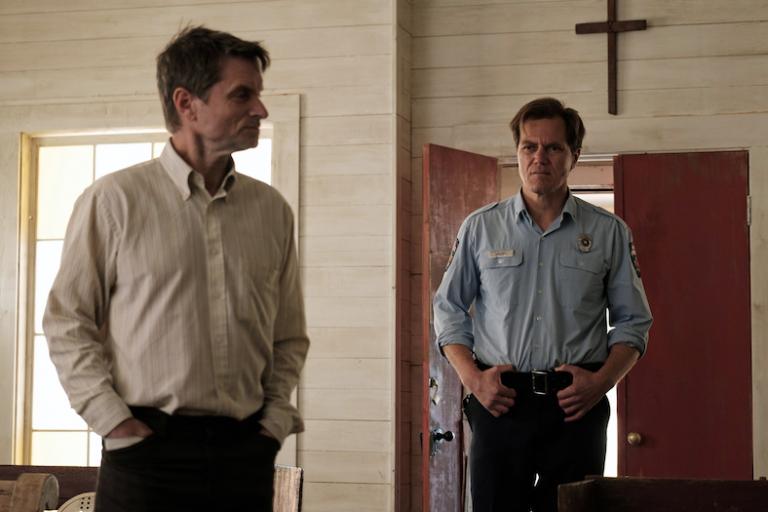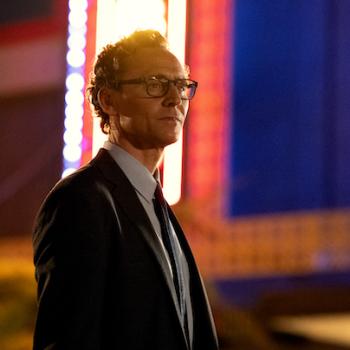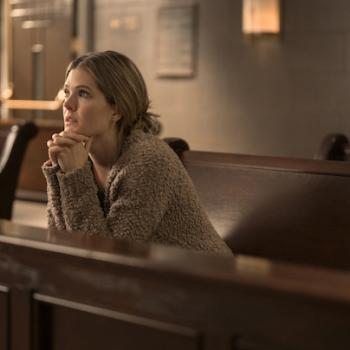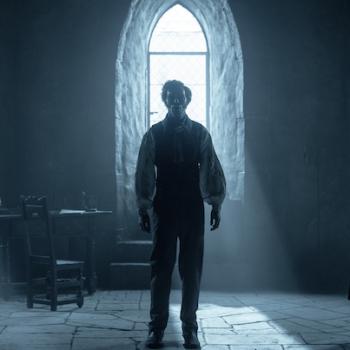
Asay: You had a chance to work with two pretty amazing actors in Shea Whigham and Michael Shannon. And it struck me while watching that so much of the interaction between these two characters wasn’t through dialogue. Just stares, glances, gestures. So much of their acting was wordless.
Teems: There’s an old adage that directing is 80%, and that’s certainly proven to be true in my experience. When you have great actors, it allows you to really let the story unfold in a more natural way. Great actors, they can hold the frame. Great actors, they tell you so much without saying a word. There’s so much going on behind the eyes. And you need that tension to engage in this cat-and-mouse game in which they engage in, you really, it just requires actors who are intelligent human beings and deep thinkers, and thoughtful people, and those two guys are certainly that.
They’re also old friends and that comes to bear in a lot of ways, because I think they really respect each other and they really, because they respect each other so much, as individuals, as friends, as actors, they both bring their A game whenever they show up. They really want to be there, to be present for the other actor. And that raises the stakes and raises the game for all the people on set.
Asay: One of the underlying currents in this movie is a sense of religious hypocrisy, the sense that preachers that have come to town before didn’t always walk the walk. Right from the get-go, this preacher feels different to the townspeople. And in part, it seems because he doesn’t know anything. He just goes up to the pulpit and reads from the Bible without embellishment, and with the growing realization that he really is, as he quotes the Apostle Paul, chief among sinners.
Teems: That was a small detail, and I’m glad you picked up on it. It was certainly something that I was interested in. It’s far down the list of things that are like the focus on the movie, but it’s a detail, that hopefully to observant viewer will take. He doesn’t go up there and editorialize or sermonize. Or talk about himself or his own point of view. And so therefore, if there’s any transformation or connection that happens in that congregation, it’s not because of what he said. And I think that’s a lesson that a lot of us could stand to learn. And certainly in the realm of American evangelical Christianity, I think that’s something we could stand to learn and be the better for it.
Asay: Are there lessons that you’d like viewers to walk away with after watching this movie? Things you think are worth chewing on?
Teems: I’m certainly not interested in giving an answer to take away, but I think there are questions here that I hope people would wrestle with. I think that that’s what the best art does. It asks questions.
There’s this great quote that I do not know who to attribute it to, but it says, ‘The problem with many Christian artists is that they want to give us the answer before they’ve lived the question.’ And that is really something that I take to heart. I think that our job as artists is to provoke and to ask questions and to make you think about something in a new way. And go away and chew on that for a little bit. I want you to feel a little unsettled by this movie in terms of what it says about forgiveness and redemption and grace and who is worthy of that. And who is not. And what does it look like when it happens. If you can walk away doing that, asking those questions, that’s a victory for me.













